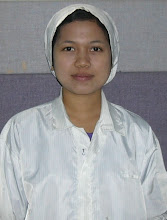Intolerance to yeast happens when the yeast normally seen in our digestive system begins to grow out of control. Usually the amount of yeast found in our bodies are kept in check by the good bacteria in our intestines. If these beneficial bacteria are killed off, through diet or sickness, yeast can begin to overgrow leading to a wide array of symptoms and health problems.
This type of condition is often known as a yeast infection. It occurs when candida, a type of yeast like fungi, grows excessively and leads to infections (usually seen in moist places of the body like the mouth, digestive system or vagina.).
This can lead to someone who's suffering from a yeast intolerance to have such symptoms as bloating, abdominal pain, itchiness, gas, headaches, constipation, diarrhea, mouth sores, coated or furry tongue, soreness and if left unchecked more severe symptoms such as autoinmune diseases.
One of the reasons of an intolerance to yeast are antibiotics. Sometimes when someone is ill and uses medicine to kill off infection it can also destroy the good bacteria that help to control the amount of yeast in our intestines. This can lead to candida excess which in turn leads to further infection.
Another main reason of an intolerance to yeast is bad nutrition. When one doesn't have the nutrients essential one needs there immune system becomes weakened. A diet that is full of sugar is one of the main sources of yeast infection. The reason for this being is that yeast lives on sugar, it's actually its primary food source. The more sugar there is in one's diet the more candida can feed and overpopulate.
Other items to avoid if you think you may be intolerant to yeast include bready foods, fermented foods like alcohol, and moldy foods like cheeses.
Some of the ways one can treat yeast intolerance symptoms include the use of medication. For instance, Nyastin is a anti fungal drug a physician may give someone in order to eliminate the yeast overgrowth in one's body.
Proper diet is another excellent treatment in ridding yeast overgrowth. Using a candida free diet that eliminates the above mentioned food will help to kill off the yeast overgrowth leading to a great deal of yeast die off and better health. This process normally takes between 3 to 6 weeks. Just know that the first couple of weeks you may feel worse due to the release of toxins into your bloodstream from the dying yeast. Don't worry once these toxins have been released from your body you'll feel like new.
Yeast infection can really take the joy out of life. It can be horrible and somewhat painful at times. By doing a few of the aforementioned steps you'll be on the path to a better life in only a short time.
One last piece of advice.. You need to visit a physician before starting any type of treatment for yeast intolerance. They'll be able to get you on a path that makes sense for you!
Best of luck and here's to a healthier tomorrow!
Erik Parsons is a candida free diet expert whose has been changing people's lives for decades. For more information on yeast intolerance symptoms and Erik's complete "Eliminate Yeast While Rejuvenating and Revitalizing My Life In 7 Days Or Less" FREE mini-course visit http://www.yeastfreedietsmadeeasy.com/


